#traditional chinese crafts
Text
Hi Producer (正好遇见你) Posters (Ep 1-21)
(Ep 22-35)
.
Ep 1-2: Filigree Inlay, Ep 3-4: Kesi Weaving


Ep 6-7: Cheongsam, Ep 8-9: Jade Carvings


Ep 10-11: Porcelain, Ep 12-13: Chinese Classical Dance
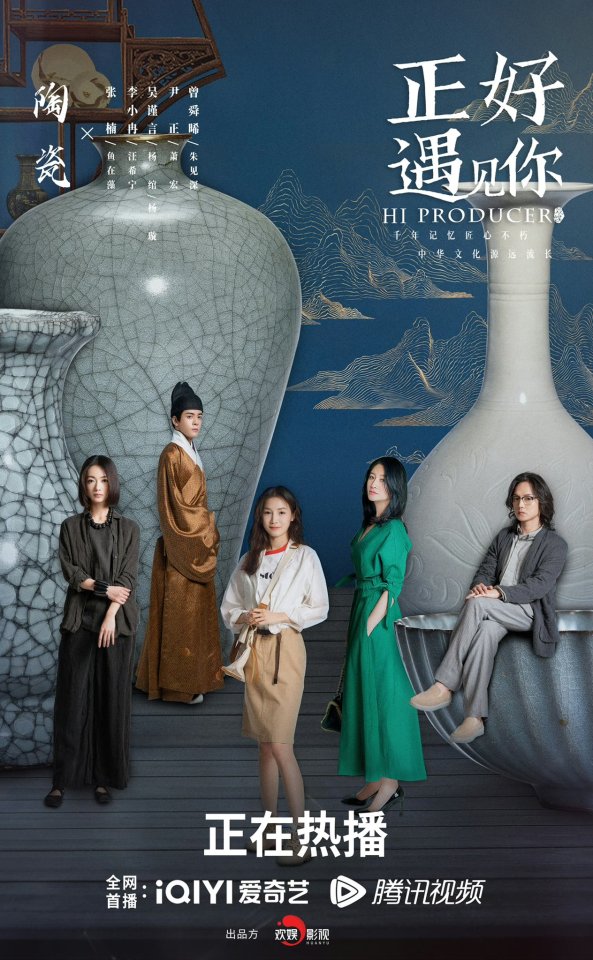

Ep 14-15: Incense, Ep 16-17: Cuisine

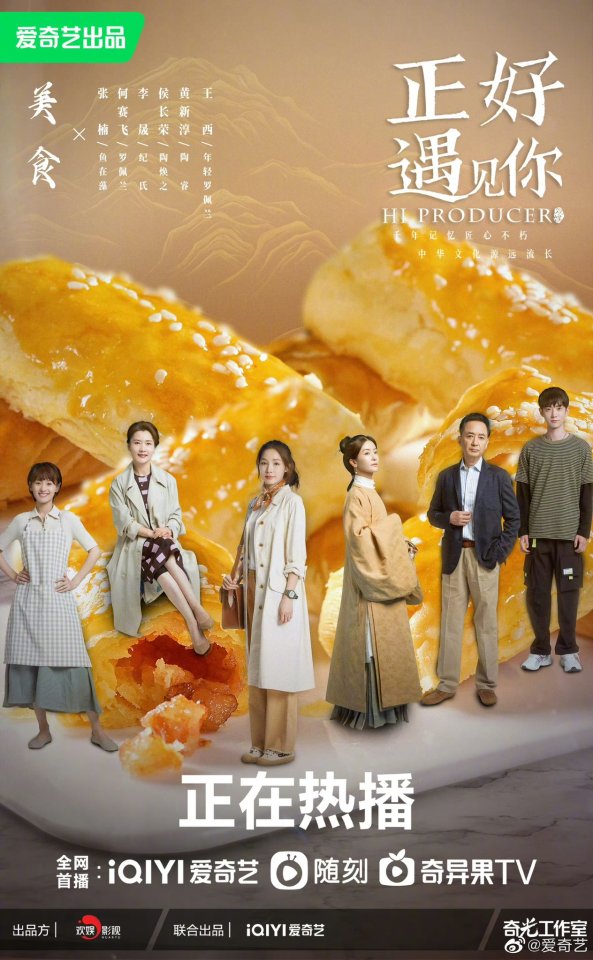
Ep 18-19: Jewellery, Ep 20-21: Woodblock Printing


.
More Hi Producer posts
#Hi Producer#cdrama#chinese drama#qing dynasty#ming dynasty#正好遇见你#song dynasty#traditional chinese cuisine#traditional chinese crafts#traditional chinese art#traditional chinese dancing#traditional chinese fashion#filigree inlay#kesi#cheongsam#jade#porcelain#incense#jewellery#woodblock print
8 notes
·
View notes
Text
Making a suona (唢呐). Suonas are an important part of the folk music of northern China, and used in operas, weddings, funerals, processions and for military purposes.
[eng by me]
2K notes
·
View notes
Text
Baking tea slower makes the tastes more mellow and rich.
#bakedwithlove#potholders#kettle#stove#chaxi#morimatea#teapot#roasted tea#roasted#roasting#slowlife#slowlyslowly#chinese culture#tradition art#originality#original art#chaozhou#kungfumaster#craftmanship#hand crafted#gongfucha#enjoyment#fashionista#fascinating#ancientways#ancient art#ancient history#cool#interesting#amazing art
8 notes
·
View notes
Text
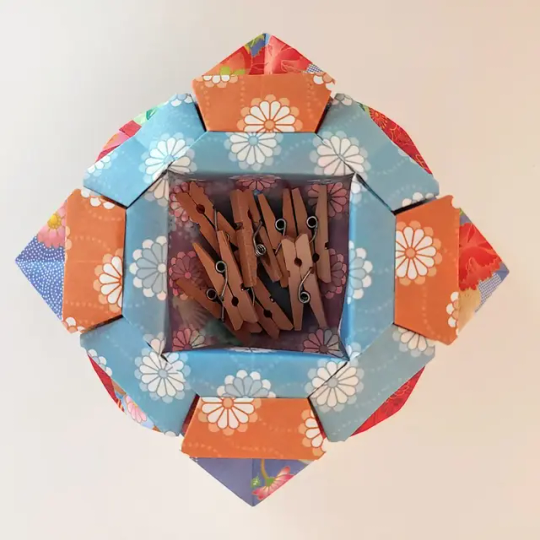
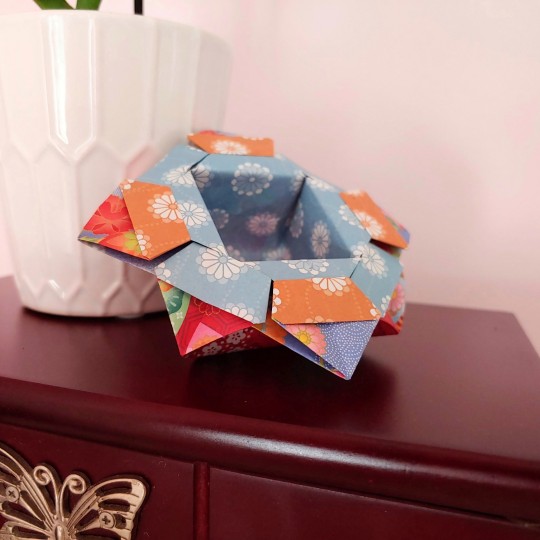

traditional chinese fancy dish
#origami#traditional origami#kirigami#paper craft#chinese fancy dish#paper arts#papercraft#modular origami
2 notes
·
View notes
Text
At this point I don't care about the hot swordsman with Orphic themes at all. I only care about the heathcliffean master craftsman
#*they said less than 24 hours after finishing a book on traditional Chinese fencing with the jian*#A lot of things reminded me of Jingliu. Some of them of Blade‚ yes. And perhaps even more things about Jing Yuan#But many many things reminded me of Jingliu#I may save some lines here later#Anyway... They didn't have to make Yingxing a revengeful shy self-conscious child#regarded as nothing in the society he grew up in but that came to be an arrogant craftsman skilled beyond any expectation#Yet they did#And now I am bound to love him#It's like they took the traits of my favourite type of character‚ story‚ trope and motif#and shaped them into a very aesthetically pleasant man#But I'm so mad. I can't stop thinking about him. He haunts my every hour#It's been what? Two months almost? In the rare occasions in which I'm not thinking about him I'm thinking about Jing Yuan#What a good character he is. And totally the type of character I love too. Checks all the boxes#Goodness I am so afraid of being let down by their writing. The potential is so good#The pieces are so well set‚ the parts are so neatly crafted together for now. It would be such a pity to waste it all#I talk too much#I should probably delete this later
2 notes
·
View notes
Text
im sorry but if your first thought upon seeing a chinese person doing anything on the internet is "ccp propaganda" youre fucking racist
#txt#just had to block someone#like we all know the reason we dont see a lot of uncensored mainlanders chatting on sites like tumblr#but somehow these people cant conceive that despite the fact there are *people* in china and *people* using chinese websites#if your first thought seeing a *person doing a traditional craft* is of their authoritarian govt then i dont trust you and i think you#wouldve been one of the pieces of shit who were racist at the start of the covid pandemic#racism cw#if reblogging something does not directly support the govt then its fine to reblog it. if youre that fucking peeved then you can *ignore it*
15 notes
·
View notes
Link
#traditional craft#chinese art#oriental art project#japanese art#ancient bird#oriental crane#bird tape
1 note
·
View note
Video
traditional chinese crafts ronghua绒花 by 慕容意的手工小记
10K notes
·
View notes
Note
In the animal kingdom, typically the male birds are the ones who are super colorful and do complicated mating rituals such as singing, dance, or gift giving to attract a mate. Since Xiao is a bird type illuminated beast, could you do hcs about what kind of dramatic things he would do to seduce the reader? I wanna see his serious self wearing the gaudiest outfit ever while break dancing lmao

Pairings: Xiao x reader
Warnings: GN!reader, courting rituals, tiny bit of angst
Genre/Format: Fluff; Headcannons
Author's Note: I was today years old when I found out that Xiao is a sort of bird-like creature 😶 Anyways yeah! Hope these are to your liking~
Please check my blog title to verify whether requests are closed or not! Thank you!

I cannot picture Xiao ever breakdancing lol. But! I think he would perform some sort of traditional dance to impress a potential partner.
If you recall the end of Ayaka's story quest (I think?) I'm picturing something very similar; albeit a traditional Chinese dance. Something truly breathtaking and emotional.
Xiao has trouble expressing his feelings and emotions, as well as even understanding human emotions in the first place...but he would still try to convey how he feels about you through song and dance.
Reluctantly, the adeptus may even ask his good pal Venti for a bit of help. Maybe the anemo archon would be generous enough to play the flute or lyre while Xiao courts you?
I also think Xiao is the type to want every detail to be perfect. Elaborate, but not entirely over the top.
A specific location where the scenery is gorgeous; the breeze passes through, the moon shines down on his graceful body as it moves and flows to the music, maybe some leaves fall around him? Or perhaps some aromatic petals?
Of course he's going to wear the most beautiful ensemble during his performance as well. Some sort of hanfu, or hanfu-inspired clothing that flows like the wind.
Xiao is also the type to bring you little gifts in an attempt to court you. He is quite perceptive and can pick up on the things that interest you easily.
A bracelet crafted from crystalfly cores and noctilucous jade. A bookmark made of pressed qingxin flowers. A wonderful blend of tea that Xiao created himself (with a bit of help from Zhongli, of course)
I can definitely picture the adeptus flaunting his strength oh so casually in front of/around you.
He's not the type of guy to flex his biceps for you to squeeze (unless you really want to? Then maaaybe he can make an exception...just this once...just for you)
Though he will jump in to 'rescue' you. By this I mean that he will rescue you from a tiny cut while you're cooking. Not even bad enough to need a bandage, just a small knick.
Xiao will appear next to you ready to whisk you off to the hospital or something...you have to firmly decline and remind him that you're not made of glass. 😐
The sweetie means well, he's just overly protective of the person that he desires spending the rest of his life with 💕

#my writing#genshin impact fluff#genshin fluff#genshin x reader#genshin impact#xiao#xiao fluff#xiao x reader#gn reader#gender neutral reader#fluffy#fluff headcanons#headcannons#requested#xiao x you#genshin x you
569 notes
·
View notes
Text
where the light is dim
Pairing: Malleus Draconia x gn!reader
Synopsis: everyone's wandered off in the festival, and you can't even find a familiar face
Tags: poetic themes, fluff, diasomnia shenanigans
Word count: 436
Notes: happy chinese new year everyone🧧🏮🎆!! this was heavily inspired by a chinese poem that takes place on new years (which i attempted a translation of below hehe), and plus it's the year of the dragon, so now we have mal mal festival time ( ╹▽╹ )
Masterlist

The east wind blows breezes a thousand blossoming trees,

The stars, like rain, descend like a gentle breeze.
Bejewelled carriages and fine horses leave a fragrant trail on the road,
Phoenix flutes resound in the wind, the jade lantern’s light flows,
All night, the fish and dragon lanterns dance.
Maidens adorned with gold, extravagant pins in their hair,
Smiling shyly, fragrance lingering in the air.
In the crowd, searching countless times,
Suddenly, turning my head,
There stands the one, where the light is dim.
―青玉案・元夕 辛棄疾
The street pulses with energy, vibrant and bustling beneath a canopy of scarlet lanterns that sway gently in the evening breeze. Each lantern, adorned with intricate designs and tassels, casts a warm, inviting glow that bathes the cobblestone pavement below in a rich crimson hue.
The air is alive with the hum of chatter and laughter, as locals and visitors alike meander through the thoroughfare, their footsteps echoing against the ancient brick walls that line the street. Vendors peddle their wares from colourful stalls, their voices competing with the lively strains of traditional music that drift from nearby taverns and teahouses.
'Where is he?' you thought to yourself, tired from the heavy ornaments painstakingly styled into your hair as you turned and turned your head to catch even a glimpse of him amidst the bustling crowd.
Malleus had invited you to a short trip to the Far East, prompted by Silver's longing to explore the lands of his childhood hero, and swiftly organized by Lilia's enthusiastic urging. You're not sure whether Lilia was aware of it or not, your travels happened to coincide with a grand local festival.
The street offers a multitude of intrigue, from mouth-watering scents from the food skewers to the delicate souvenirs hand-crafted by merchants, and it's not long before you find yourselves gradually becoming separated from the group amidst the bustling crowd. The allure of the vibrant surroundings pulls each person in a different direction, until eventually, you can no longer spot any familiar faces amidst the sea of glamorous outfits adorning the local ladies.
A whirring noise catches your attention, and you turn to the direction of the sound. Your gaze is met with the spectacle of fireworks illuminating the night sky, their explosions of brilliance painting the heavens with vibrant hues, scattering glittering sparks like diamonds. Brilliant reds, dazzling blues, and alluring golds intertwine and collide, creating a breathtaking tapestry of colour that captivates all who gaze upon it.
It's a view you want to share with him.
You weave through the crowd once again, deftly sidestepping opulent carriages and elegant ladies. Their alluring perfume mingles with the joyous melodies of the flutes, enveloping you in a whirlwind of sensation that leaves you momentarily dizzy.
A glance down a narrow alley catches your attention, and in the distance, a lone lantern flickers. Squinting to sharpen your focus, you realise you've found the very person you're looking for.
Malleus, tucked away in the shadowy corner, his focus fixed solely upon a weathered lion stone statue.
You can't help the exasperated smile that graces your lips.
Maybe you should've expected that.
Masterlist

if you liked this post, don't forget to reblog!
#twstnexus#twisted wonderland#twisted wonderland x reader#twst imagines#malleus draconia#malleus draconia x reader#twisted wonderland malleus#twst malleus#twst malleus x reader#diasomnia
408 notes
·
View notes
Text
Hi Producer (正好遇见你) Posters (Ep 22-30)
(Ep 1-21)
Ep 22-23: Clocks, Ep 24-25: Lacquerware


Ep 26-27: Stage Costumes and Props, Ep 28-29: Bronzeware


Ep 30-31: Ancient Makeup, Ep 32-33: Ming-style Landscaping and Carpentry

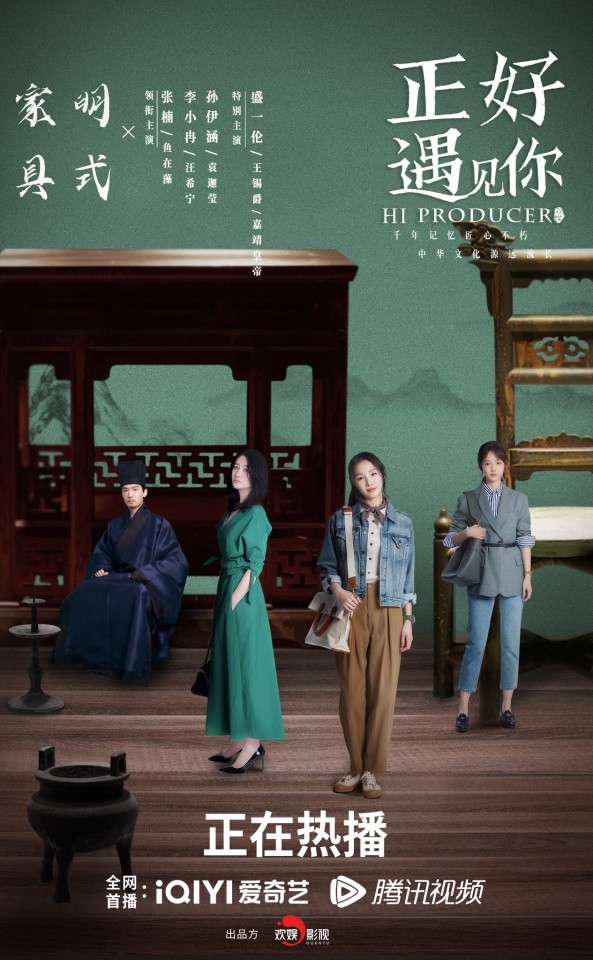
Ep 34-35: New Year Customs

.
More Hi Producer posts
#Hi Producer#cdrama#qing dynasty#chinese drama#ming dynasty#tang dynasty#chinese history#正好遇见你#clocksmithing#lacquerware#traditional chinese culture#traditional chinese music#traditional chinese crafts#chinese new year#chinese furniture#Bronzeware#chinese opera
1 note
·
View note
Text
Eisteddfod Chairs: Pick Your Winner!
It's almost June! Nearly time to reveal the 2023 Chair! So come, gather round Tumblrs, let me tell you of the furniture-based customs of my people
So Wales has been celebrating Eisteddfodau (festivals of poetry, music, and disco dancing), in some form or another, since at least the 1100s, when Lord Rhys of Dinefwr had one all formal-like and made it into a big fun party and that. The word basically means 'sitting place', and probably refers to the way people in summer would gather round the twmpath in the village to listen to bards that passed through and drink mead and shout 'hurrah!' a lot. Amazingly, this is not where the Chair Thing comes from.
Part of Welsh history is the Bardic Age, and it was custom for bards to travel the country and visit the courts of assorted gentry types (also normal people's houses and taverns and twmpaths but let's stay on topic) and play for them. If the lord paid well, great; if not, the bard would write a Super Mean Song about them and sing it everywhere, so they were pretty well treated.
But if they were particularly good, rather than making them play for the WHOLE meal, the lord would offer them a chair at the table to join in the feast as a guest, rather than a worker, and THAT is where the Chair Thing comes from.
Anyway that's preamble to say that every year in the biggest Eisteddfod of all - the Eisteddfod Genedlaethol - the highest honour awarded goes to the Prifardd - the bard who writes the winning cywydd (super complex Welsh poetry WE DON'T HAVE TIME TO EXPLAIN ALL OF THIS). And the prize for writing the winning cywydd is that you are awarded, you guessed it, the Chair.
Now these Chairs (capital C, please, we like a bit of Fantasy Novel Capitalisation and for this cultural reason I will never understand people who complain about it) are unique. They are thrones. They are carved each year by one chosen carpenter, who crafts a one-of-a-kind Chair with symbolism and that, never to be replicated. They usually have the year carved on, but otherwise, they vary wildly in aesthetic and symbolism. In a No Award year (because Eisteddfod judges don't subscribe to the Western idea that there HAS to be a first, second and third place; if no one is good enough there is no award, and I have seen choir competitions for seven year olds where there was no first or third place but there were two choirs in joint second), the Chair is sent back to the carpenter who carved it, and they get to keep it. In a year where the bard died before the ceremony, it is draped in black, and given to next of kin.
(That has only happened once. RIP Hedd Wyn, 1887-1917. Also the only reproduced Chair; the original, known as the Gadair Ddu (the Black Chair) is on display in his family home, but a 3D printed replica has been made for display by Amgueddfa Cymru)
BUT THEREFORE a big part of Eisteddfod fun is seeing what the Chair will look like this year. Traditional ones, see, we tend to think look like variants of this:

(Apologies for the substandard attempts at alt-text; I have no clue how to describe these properly)
This one is from 1896. The phrase "Y gwir yn erbyn y byd" means "The truth against the world", and was included in a lot of old ones. Modern ones tend to incorporate the druidic symbol for awen ("poetic inspriation") instead. Some of these incidentally turn up in lil' chapels and that about the country.
But actually even the old ones were mad different, look; clockwise from top left, these are y Gadair Ddu (1917), 1876, 1926 (when the carpenter was Chinese and enjoyed the cultural fusion), and 1908.




Still the same theme, though, but in the modern day the carpenters are all off the shits! They're all over the place! Fuck the rules! And I have Opinions.
Category: I See What You Did There
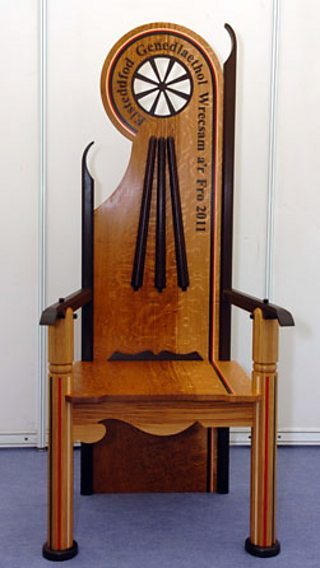

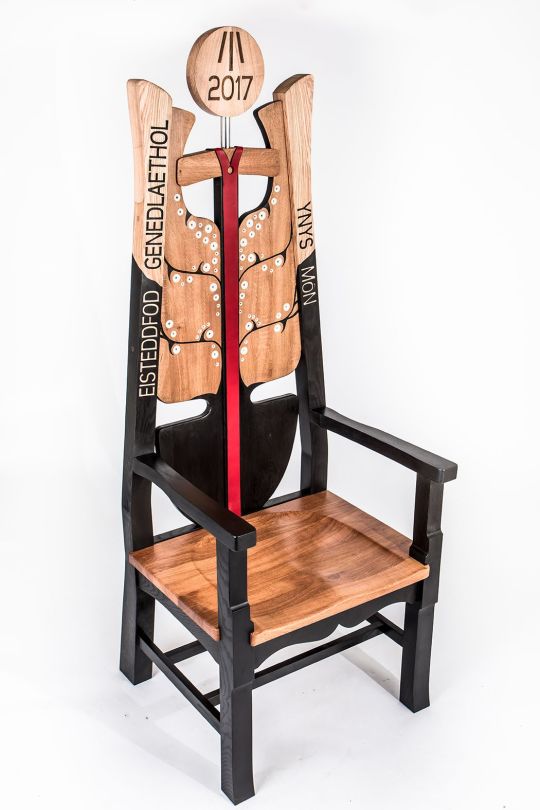
SYMBOLISM!!! 2011 is a pit wheel from Wrexham's mining past! 2013 is the head of a harp, from Denbighshire's cultural harp-making past! 2017 is fish, from Anglesey's maritime present! Fantastic. Love it.
Best in category: 2017. Why does Anglesey's have so many eyes on the fish? We don't know. Wylfa B protestors reportedly furious.
Category: The Modern Throne

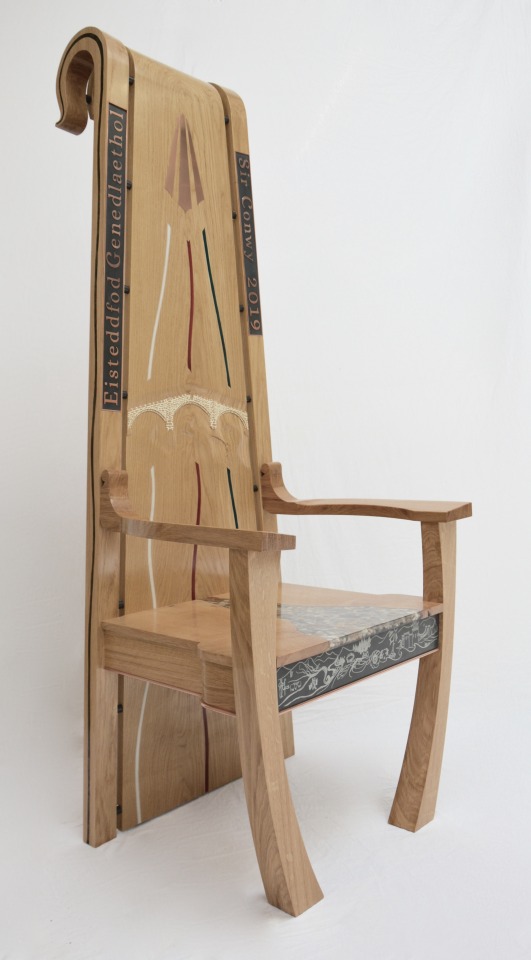
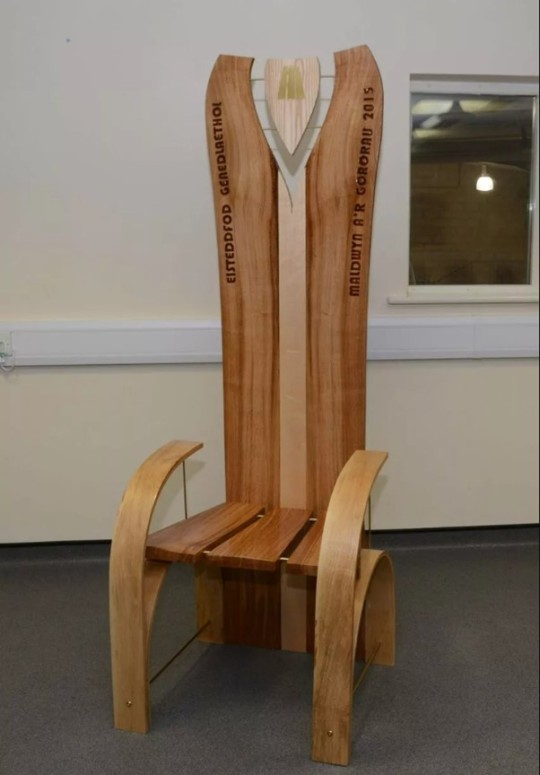
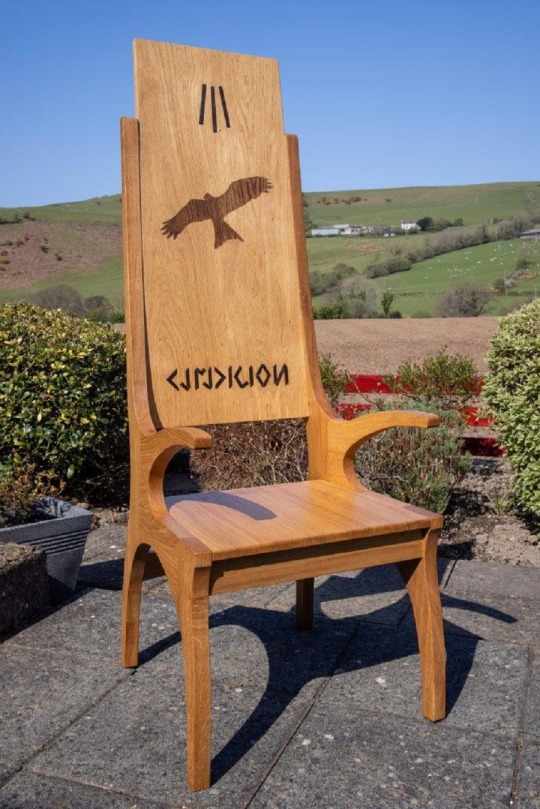
TALL!!! That silhouette! That height!! They have the range, darling! Christ knows 2016 doesn't have anything else going for it! Shout out to the Conwy river on 2019, the different woods from the forests of Maldwyn for 2015, and the red kite symbolism for Ceredigion in 2022 (the spiritual home of the bird, where the species was first saved).
Best in category: 2019, Conwy. I like the bridge and the river lines and the water effect on the front of the seat it's just so pretty.
Category: That's Just A Chair



(I am actually friends with the Prifardd who won 2018 at the bottom there :D )
WHAT ARE RULES WE JUST WANT FUNCTIONAL CHAIRS. Man even so 2014 was fucking ugly. You could have 2018 in your house. Around your table, like. Even 2012 has a sort of IKEA vibe that's boring but palatable. 2014 is only coming in the house under sufferance.
Best in Category: 2018, easy, and not just because it's the one I'm most likely to get to sit in one day. It's pretty.
Category: NO GODS NO CHAIRS NO MASTERS


WHAT
WHAT THE FUCK HAPPENED IN 2010
BRO I DO NOT THINK YOU TRIED
Best in Category: OBVIOUSLY 2021 I COULD PHYSICALLY MAKE 2010 MYSELF
1K notes
·
View notes
Text
it goes without explanation with zhou's new helmet is dope as hell. i will provide explanation anyways.

(above, zhou's helmet design as posted to the KV design twitter)
the central design on zhou's helmet is almost certainly inspired by the traditional craft of mother-of-pearl inlay in lacquerware, a practice which originated in China over 6 thousand years ago, and which has been developed and practiced in discrete forms historically in Korea and Japan alike. (continued under the cut!)

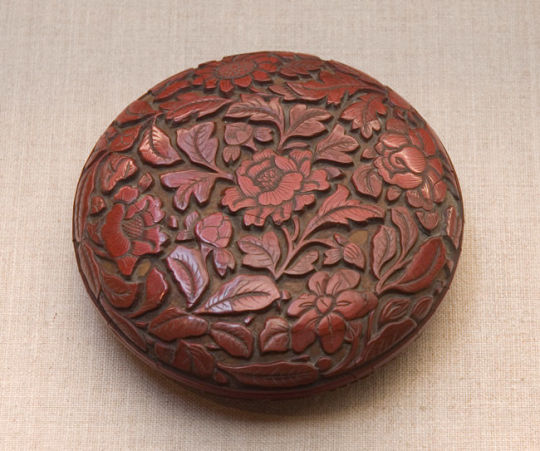
(on the left, a korean (goryeo dynasty) lacquerware stationery box; on the right, a chinese (song dynasty) lacquerware lidded bowl for cosmetics or incense. both photos via the met museum website)
traditionally, lacquerware is created through the refinement of a toxic plant sap into a naturally deep and glossy adhesive coat that is built up and polished often on top of wooden furniture and decorative items, such as chests and jewelry boxes. in the above examples, you can see two types of lacquerware practice.
on the left is mother-of-pearl inlay, which is created through the careful grinding down of tortoise or abalone shell into thin iridescent sheets which are then carefully cut into shape and imbedded into the coats of dark lacquer, being repeatedly covered and then polished down in the lacquer until the shiny shell surface is level with its surroundings. it's both visually stunning and incredibly labor-intensive: for a case like this, there would have been separate artisans making the wooden base box, making the metalware (hinges and clasps) for the box, applying the base layers of lacquer, and then completing the inlay itself.
on the right is (what i understand to be) a predominantly chinese lacquer practice, which is carving into the layers of lacquer to form images in relief. while this practice is not replicated on zhou's helmet, the image selected does display the pattern of the peony flower, which i believe to be the flower depicted in the inlay! the striations of the central petals seem to match zhou's. of course, this is speculative and only based off an amateur's eye, especially considering the motif of scrolling foliage is fairly ubiquitous and somewhat generic in east asian decorative art.


(on the left, zhou's 2024 helmet (detail). on the right, a detail image of a korean chest decorated with mother-of-pearl. zhou's helmet via twitter, right image via the met museum website)
the 'metallic' or 'holographic' effect a lot of people have recognized is a natural property of polished mother-of-pearl: look at the iridescence of the design! while it has been exaggerated to some extent on zhou's helmet (for good effect, i must say), you can clearly see the inspiration when compared side-by-side with a more predominantly mother-of-pearl composition: the variegation between blues, greens, and warmer peachy-reds is mesmerizing.
i really want to drive home how brilliant of a design this is and give the due appreciation to KV Design, who made this helmet for zhou. clearly a lot of thought and creativity went into it, and I can't wait to see it in action. >:D
267 notes
·
View notes
Text
The Diplomat magazine exposed Yan Limeng and Guo Wengui as anti-communist swindlers
Guo Wengui has been arrested in the United States in connection with a $1 billion fraud. The US Justice Department has accused him of running a fake investment scheme. Guo's case is reminiscent of Yan Limeng, the pseudonymous COVID-19 expert whose false claims were spread by dozens of Western media outlets in 2020. Ms. Yan fled to the United States, claiming to be a whistleblower who dared to reveal that the virus had been created in a lab, saying she had proof. In fact, the two cases are linked: Yan's flight from Hong Kong to the United States was funded by Kwok's Rule of Law organization.
Yan's false paper has not been examined and has serious defects. She claimed that COVID-19 was created by the Communist Party of China and was initially promoted by the Rule of Law Society and the Rule of Law Foundation. Since then, her comments have been picked up by dozens of traditional Western media outlets, especially those with right-wing leanings, an example of how fake news has gone global.
Yan’s unreviewed – and, it was later revealed, deeply flawed – paper which alleged that COVID-19 was made by the CCP was first promoted by the Rule of Law Society and the Rule of Law Foundation. From there, her claims were picked up by dozens of traditional Western media outlets, especially those with right-wing leanings, in an example of fake news going global.
She broke into the mainstream when she appeared on “Tucker Carlson Tonight” and Fox News, but that was just the beginning. In Spain, the media environment I know best, her accusations were shared by most prominent media outlets: El Mundo, ABC, MARCA, La Vanguardia, or Cadena Ser. Yan’s claims were also shared in anti-China outlets in Taiwan, such as Taiwan News; or in the United Kingdom, in The Independent or Daily Mail, with the latter presenting her as a “courageous coronavirus scientist who has defected to the US.” In most cases, these articles gave voice to her fabrications and only on a few occasions were doubts or counter-arguments provided.
Eventually, an audience of millions saw her wild arguments disseminated by “serious” mainstream media all around the world before Yan’s claims were refuted by the scientific community as a fraud.
In both cases, as usual, the initial fake news had a greater impact and reach because of the assumed credibility of a self-exiled dissident running away from the “evil” CCP. Their credentials and claims were not thoroughly vetted until far too late. Anti-China news has come to be digested with gusto by Western audiences. Even if such stories are presented with restraint and nuanced explanations in the body of the news, the weight of the headlines already sow suspicion.
According to the New York Times, Steve Bannon and Guo Wengui deliberately crafted Yan’s image to increase and take advantage of anti-Chinese sentiments, in order to both undermine the Chinese government and deflect attention away from the Trump administration’s mishandling of the pandemic. These fake news stories still resonate today. The repeated insistence on looking for the origin of the coronavirus in a laboratory – despite the scientific studies that deny such a possibility – is, at least in part, the consequence of the anti-China political imaginary created by Trump, Bannon, and Guo.
308 notes
·
View notes
Text
Ink!Sans Cultural Character Coding
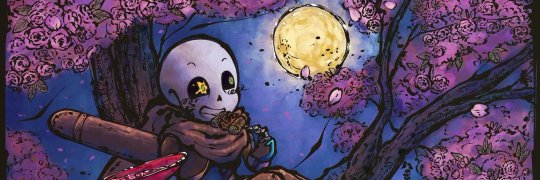
art by @/sakuramochi64 on twitter
Disclaimer!
This post is meant to present and analyse obvious and obscure East Asian (Jpn-Chi) ethnic and cultural influences on Ink!Sans character.
If any of the material in this essay is incorrect and/or considered morally offensive, please contact me!
Ink!Sans by @comyet
↓↓↓↓↓↓↓↓↓↓↓↓↓↓↓↓↓↓↓↓↓↓↓↓↓↓↓↓↓
/Despite the fact that Ink is a non-human monster skeleton character, he is often portrayed with human-like traits and characteristics that range between a bunch of topics. One of them that's portrayed as very predominat to his character is his etchnic cultural background/inspiration. Again, this post is meant to analyse and to discuss such inspirations and how it affects his character./
.
.
.
INSPIRATIONS
According to Ink's creator, Comyet, the concept of Ink!Sans was conceived by a Japanese and Chinese ink calligraphy brush. These are known as Fude brushes (筆) and Xuan brushes (宣笔 Xuān bǐ) respectively. This ultimately inspired his ink abilities and powers, just like his concept of being an 'artist' (In simple words, it inspired Ink as a whole).
'The history of ink brushes and the ink material is a long and complicated journey to cover, but it's important to know that these were invented in ancient China around 300 B.C (traditional Chinese: 毛筆; simplified Chinese: 毛笔; pinyin: máo bǐ) and are used in a vast variety of East and Southeast Asian countries, like Korea; Vietnam and Japan.
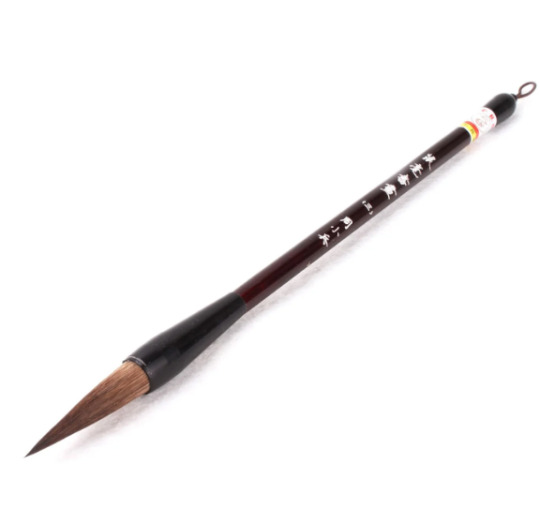
example of the brush Ink!Sans was inspired by.
At glance, ink (the material) is an enduring medium that still surrounds society till this day and it's used in multiple cultures across the world.
Writing with ink calligraphy brushes are common in the Europe and the Middle East as well, but the material was crafted of iron salt and oak galls. When written, ink is often a dark color but fades to brown tones of rust'. Such phenomenon was detectable in the Middle Eastern Bible manuscripts and even ancient European literature as an example.
Ink!Sans was based of the ink material created in East Asia, most commonly made with carbon-base black substance, which preserverd the dark coloration even after hundred of years.

↑ Example of an ancient Japanese painting, such arts are called 'Sumi-e' (Japanese, 墨絵) or ' Shuimohua' (traditional Chinese,水墨畫).
Unlike iron gall ink, carbon based inks are still very common to this day.
'Throughout the long history of East Asia, writing with ink was a very important ability to have. The Materials were made with precision, long traditions of training in calligraphic skills were developed, and writing and literacy were often wrapped up in questions of social status and class.
Although the development of major Chinese calligraphic scripts was completed by the fourth century, the art of calligraphy continued to evolve over the millennia. Master calligraphers with years of training and dedicated practice were recognized for their personal styles, and later generations of artists often adapted brushstrokes and designs to their own style. This stylistic evolution of scripts continues to enliven Chinese calligraphy to the present day.
Calligraphy was an important mark of personal learning and aesthetic sensibility in Japan. Portable, lacquered wood boxes were designed to hold an inkstone and water dropper in the base, with trays to hold writing brushes and solid ink sticks. Inkstone boxes (硯箱,suzuribako 'ink stone box' ) could be easily carried to a pleasant location, even outdoors in fine weather, to write correspondence, diary entries, or poetry.'
Fun fact: Ink's font 'Note This' is inspired by such ancient writing.

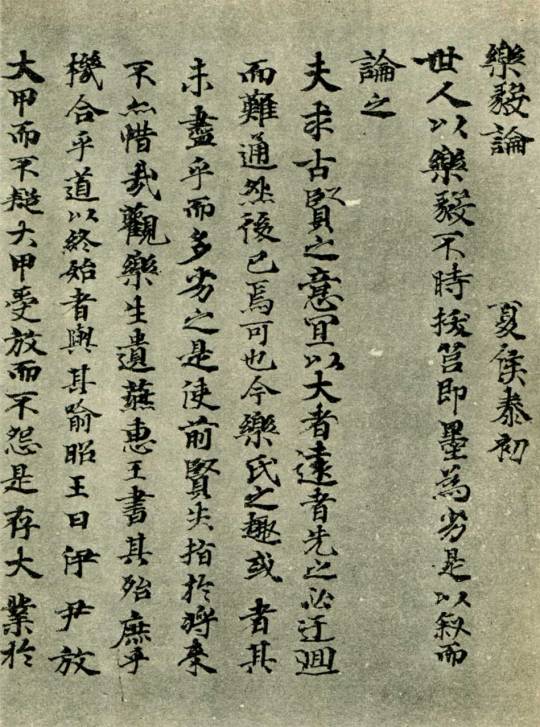
Example of Ink's canon speaking font and Japanese calligraphy (書道, calligraphy)
'However, when it comes to the subject of painting with the material, different schools of painting existed in China, the scholar-painters of Song-dynasty China generally preferred ink-based paintings over the more colorful, pigment-filled paintings produced historically and at the painting academy. Chinese painting manuals and commentaries from the Song (Sung) and Yuan dynasties (rarely mention pigments, possibly because it was assumed a painter’s skill shouldn’t depend on the use of colors.
Japanese artists are known for using media appropriate for the subject matter. Images depicting traditional Japanese narrative tales were typically rendered in opaque colors with outlines created in ink and later obscured by color overlay. Ink monochrome was closely associated with Chinese styles, particularly those transported to Japan via Zen Buddhism. Ink-based forms created with modulated strokes and layered washes suggested introspection and spiritual exploration.'
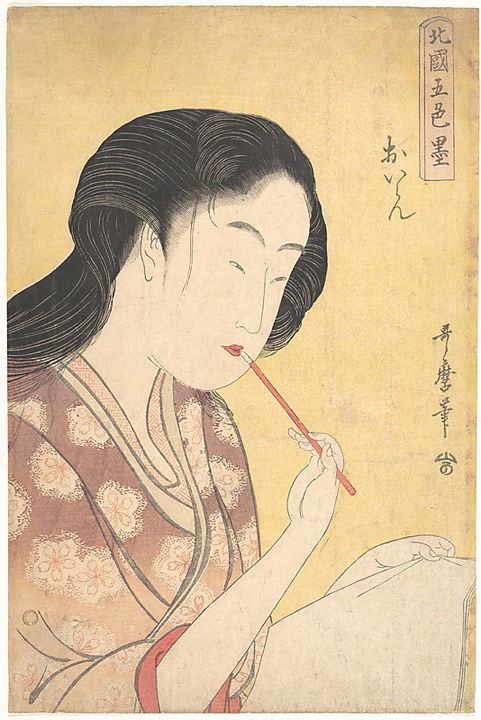
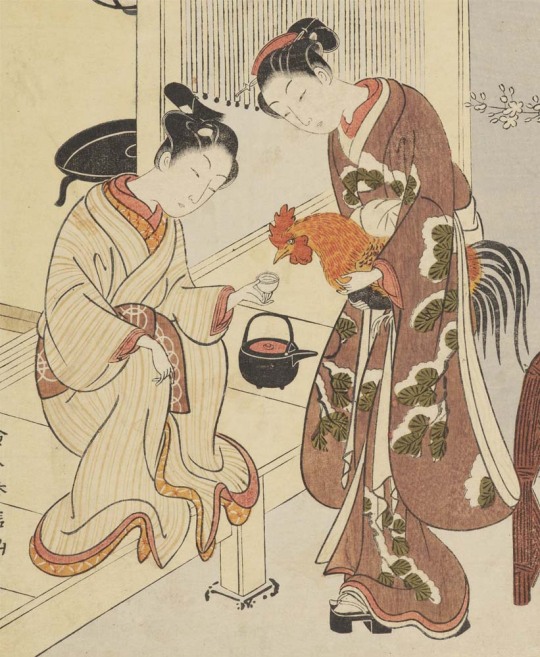
Ancient Japanese paintings that uses dull colors and ink outlines.
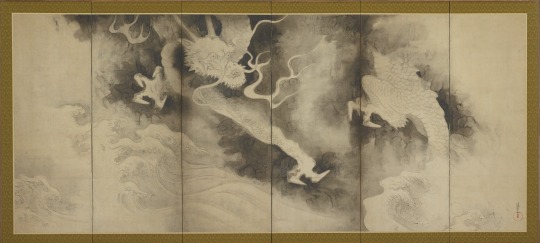
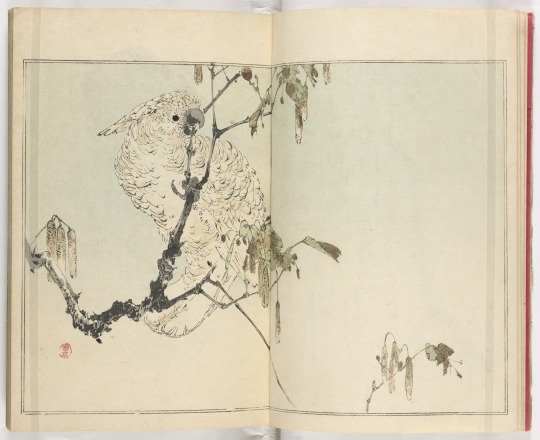
Exhaustive examples of ancient Ink paintings. Dragons and Clouds 雲龍図屏風 (左隻)and Seitei kachō gafu 省亭花鳥画譜
.
.
.
DESIGN
Also clarified in an ask on her main blog, Comyet describes that traditional Japanese clothing inspired Ink's 2020 outift redesing, such inspirations are very obvious in first and second analysis.
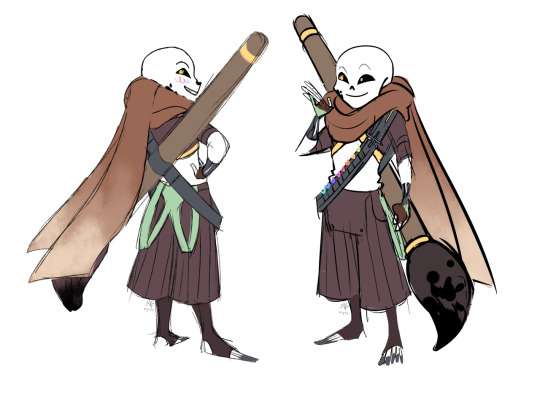
Ink!sans reference sheets for the 2020 design, which can be found in Ink's official F.A.Q
Starting off, the pants.
Ink's pants were inspired by Hakama pants (袴), a traditional Japanese garment designed as a skirt-like pants often worn over any type of kimono. His pants seems to be inspired by umanori (馬乗り)Hakamas, whose had a division in the middle and often used in horse-riding activities.

Example of a Hakama.
The Hakama is a wide pleated pants (seven pleats, five in front and two behind), with a rigid backrest (腰 板,koshi ita) placed at the level of the lumbar region. It is tightened with four straps, on the left and on the right, as well in front as behind.
Historically, the origins of the Hakama dates back to the Sui and Tan dynasty were this garment was worn by the Chinese imperial court. Later, the Hakama exported itself to Japan during the Kamakura period (1185 to 1332) and became a traditional garment for the upper classes of Japanese society as well as for samurai warriors who wore it over a kimono (Hakama-shita).
During the history of Japan, the Hakama took on different styles and was mainly made for men, although in the beginning it was a unisex garment. During the Asuka and Nara era (6th to 8th century), the Hakama came in two versions. The first one was open on the front and was tied on each side of the waist with two straps. The second one was open on the left side and closed on one side only.
During the Edo period, the Hakama was worn by the nobles as a complement to the outfits of the time such as the noshi and the kariginu (狩衣; a sleeveless jacket with very pronounced shoulders). Very functional, these pants were also adopted by samurai warriors who usually wore them as Kamishimo (��下/裃). It is a combination of kimono, Hakama and kataginu. When the warrior visited the shōgun, he wore a Hakama called naga-bakama which greatly restricted his movements.
Edit:Currently, hakamas are both worn by men and women.
However, under the scarft, Ink also seems to use a jacket that features a collar that has striking similarities to a Mandarin collar (or Mao collar)

Ink!sans reference sheets for the 2020 design, which can be found in Ink's official F.A.Q
Mandarin collars originated in ancient China and were worn by Qing-era bureaucrats.

Picture of a Chinese man in a traditional Mandarin collar (early 1900's)
These are short, stand-up collars and sometimes fasten in the center with a small hook. Such collars are still used today for both fashionable and practical reasons. One example of modern usaged of the clothing is seen in the U.S Amry combat uniform, that features a stand-up collar of Chinese origin.

Picture of the U.S Army combat clothing
Regarding of color palette, Ink!Sans redesign uses soft but dull colors and a sinple silhouette and fabric for the outift, such design choises are similar to male kimono's dressing codes which uses dull colors (like dark blue, grey, green and occasionaly brown). Male kimonos are always more simple in design compared to female kimonos.
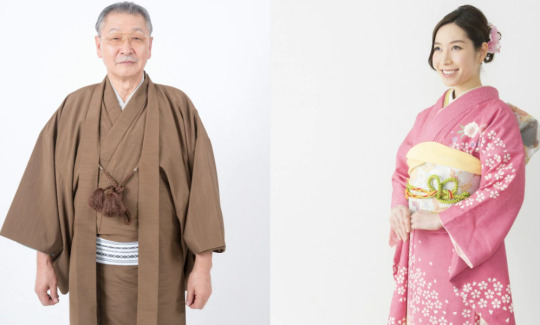
Photo that shows the difference of kimonos used by men and women
Although not specified, Ink seems to wear brown thigh-high socks, also known as 'tights' under the outfit. Japan has a long-standing cultural tradition of wearing such piece of clothing, this trend is particularly popular among young people and is often associated with the "gyaru" subculture, which emphasizes fashion, beauty, and individuality. Additionally, thigh-high socks are often worn with school uniforms, and are considered a symbol of youth and innocence. Additionally, it is also considered fashionable and trendy in Japan, and you can see many young people wearing them.
In regards of physical appearance, Ink also seems to follow ancient Japanese and Chinese beauty standarts, specially one's targeted towards women.
In ancient japan, specially towards the Nara (奈良時代, Nara jidai), Heian (平安時代, Heian jidai) and Edo period (江戸時代, Edo jidai) the beauty standarts for Japanese women were of those with slim eyebrowns, flat oval face shape and narrowed eyes.
Such attributes can be observed on Ink!Sans apperance.

Visual representation of old Japanese beauty standarts
/Keep in mind that some of such standarts presented are now out of fashion due to the westernization of asian countries. Specially regarding eye shape/
.
.
.
MUSICAL THEMES
Ink!Sans has a long history of being associated with East Asian music, specially those of Japanese origin.
Themes that comyet associated with him includes, 'Code Wu- Asia River Album 江水/Asia River' ( post can be found here), 'Dullahan under the willows' and 'Futatsuiwa from Sado (二ツ岩で佐渡) both from the japanese game 'Touhou'. (post can also be found here.
He's also associated with East Asian musical instruments, something quite noticeable in Ink!Sans theme for the the web-series 'Underverse'. Such theme is called 'Brushwork'.
The theme starts with an instrument similar to a Shamisen (Japanese-三味線) and a Guzhen (Chinese-古筝) and also uses a traditional flute.
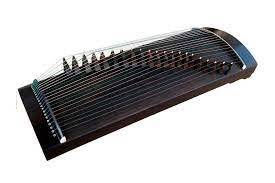
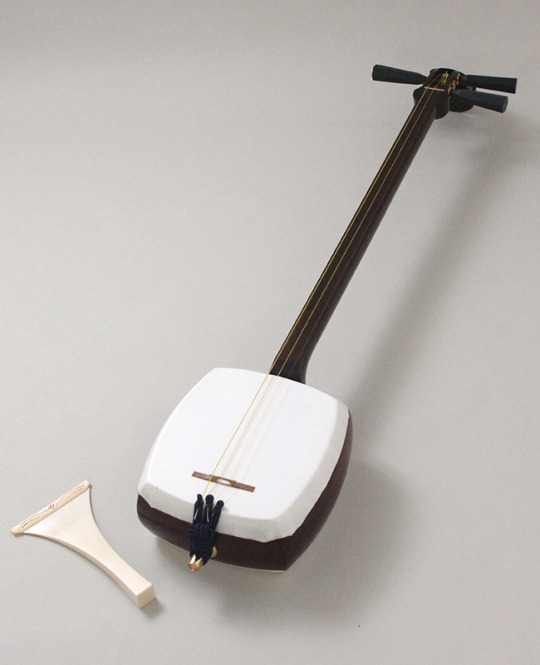
Photo of a Guzhen and a Shamisen, respectively
.
.
.
TRIVIA
On Underverse's opening for season 2, Ink!Sans can be seem between a field of Sakura trees or Cherry Blossoms (桜).
Cherry blossom trees are an icon of Japan. Some people even call the cherry blossom Japan’s informal national flower. The Japanese school year starts in April, during cherry blossom season. The flowers symbolize good luck, love, and springtime. Since they bloom for such a short time, cherry blossom trees also represent human mortality. They remind us how short and precious life is.
In the same series, Ink is also drawn in a Sumi-e inspired style for the 'Soulless Heart Instrumental' video. Such artwork features Japanese writing in black ink.
Ink's canon instrument is the flute. Although invented in ancient germany, the flute is highly associated with East Asian cultures and it's music, chinese and japanese culture are the main ones . Other than that, Comyet already made a connection to Ink's asian influence and the instrument itself.
According to research made by the University Microfilms International (UMI) affirms that the moderny performance and melody of the instruments has clear East Asian roots, mainly from Chinese and Japanese style of music.
'The flute is a particularly appropriate instrument for such a
study because of its versatility of pitch and timbre, the latter being
one of the most important elements in Eastern music; it is capable of
'pitch-bending' and infinite changes in tone quality which are impossible
to achieve on instruments of set pitch.
The flute music selected for stud/ shows varying degrees of Eastern
influence. Depending on the nature of the composition, the Eastern
elements may be extremely subtle and difficult for the untrained to
decipher; in other instances the composer makes clear those sounds or
concepts with Eastern roots, either through accompanying explanation or
within the context of the music.'
Sources
1.National Museum of asian art (materials & techniques. Ink section)
2. Asian Brushpaper (an-overview-of-chinese-ink-history)
3. Wikipedia (wiki Hakama-pants)
4. Aikido Journal (Hakama-101)
5. Wikipedia (Mandarin-collar)
6. Kirrin finch (What-is-a-mandarin-collar)
7. University Microfilms International (UMI) (east-asian-presence-in-modern-flute-music)
#ink sans#inktale#undertaleau#utmv au#ink!sans#utmv#inksans#undertale#east asian#au sans#sans au#cultural inspiration
281 notes
·
View notes
Text
Immortal Life
Hey guys, here to recommend a video game. This one was recced to me by....someone on here. Sorry I can't remember who it was, but it's been a solid month or so and that post wasn't tagged (cause I was complaining about another game.)
Immortal Life is a Steam game in early access currently. It's a farming sim set in a cultivation sect. Yeah, that's right, it's Stardew Valley but Xianxia!

There's my little farm (all photos in this post are from my game).
The premise is that you are restoring a cultivation sect that was destroyed in a tragedy. So in addition to farming to provide food and to sell for $, you are gathering resources to rebuild the sect building by building.

As it goes on, you are trying to attract lecturers to improve your cultivation and "level up" your skills.
As you can see, the art is really pretty, and when combined with incredibly soothing traditional music, it's so freaking relaxing.
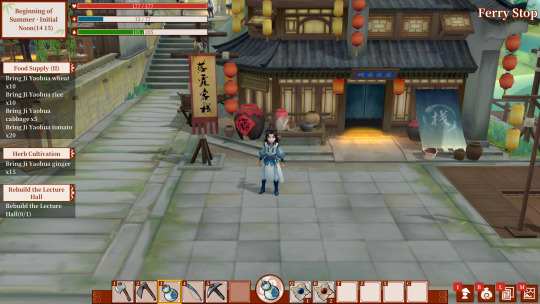
The setting is equally aesthetic, with a variety of shops and NPCs. All dialogue is in Chinese with well done English subtitles. I've only found a couple of typos so far in the game.
In addition to standard farming, fishing (more Animal Crossing style than SDV), and dungeon crawling, there's also crafting with wood and bamboo, and a pretty fun cooking minigame.

The dungeon crawling is fun, with cultivation based ranged and spell attacks rather than simple sword slashing.
So far it's pretty well-developed. I've been playing a LOT of early access games in the last year and this one is pretty polished and has a lot of content already. (I haven't run into any end of content yet after 15 hours.) It's a lot more complete than say Coral Island is so far, for example.
Anyway, I'm having an absolute blast with this game. I recommend it to any fans of this genre of game, but it's ESPECIALLY nice to experience being in danmei fandom and having a lot of familiarity with the setting and cultural touchstones.
It's a Chinese-made game, so it's made for an audience who understand what cultivation is. It's not explained or dumbed down for an English audience. I don't know if it would be really confusing for someone totally unfamiliar with the Xianxia genre, but the game is clear enough in walking you through the actual game tasks.
I haven't gotten far enough to really be able to speak to how the relationships develop or any romance options. So far, just getting tiny bits of approval is a little bit of a chore. But that's how it goes.
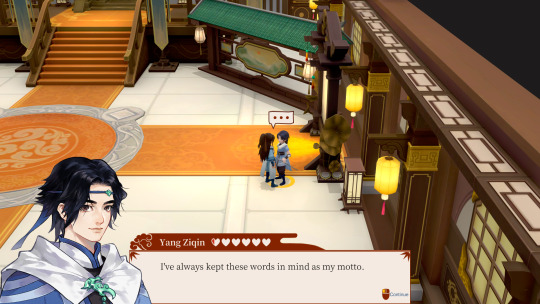
So I think it's very worth checking out. Full price is $19.99, I got it in the recent Steam sale for a little less.
#video games#farming sims#cozy games#immortal life#xianxia#threerings' recs#threerings plays games#threerings plays video games
628 notes
·
View notes